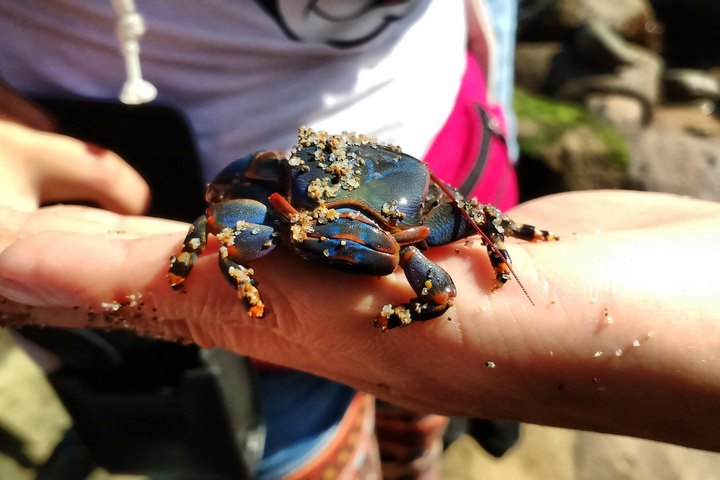Petrolisthes spp.


| Latin name | Petrolisthes spp. |
|---|---|
| Local name | Porcelain crab |
| Family | Majoidea - Petrolisthes |
| Origin | East Indian Ocean, West Indian Ocean, Australia, Japan, The Red Sea, The Mexican Golf, West Atlantic, Indonesia, Mediterranean Sea, East Pacific, New Zealand, Central/West Pacific |
| Max length | 5 cm (2") |
| Minimum volume |
50 l (13 gal) |
|---|---|
| Hardiness |
Hardy |
| Suitable for aquarium |
Suitable for most aquarium |
| Reef safe |
Always reef safe |
| Aggressiveness | Peaceful |
| Recommended |
Small crustaceans (Krill, mysis, artemia...) |
|---|---|
| Mostly |
Detritus |
This species is very secretive and will not often be seen out in the open.
This species is nocturnal and therefore the most active when the light is dimmed or turned off.
If stressed this crab will drop one or both claws.
Most crabs are not wanted in coral aquaria, although there are a few which are either fun or useful.
James W. Fatherree. 2010. Aquarium Invertebrates: Crabs in the Marine Aquarium - Advanced Aquarist - (English)
Ronald L. Shimek. 2004. Marine Invertebrates (PocketExpert Guide) - TFH Publications / Microcosm Ltd. - (English)
Bob Fenner. Crabs For Marine Aquariums? Part 1, Part 2, Part 3 - Wet Web Media - (English)

